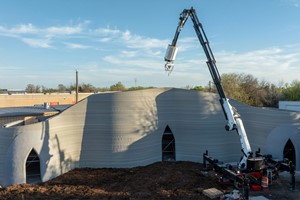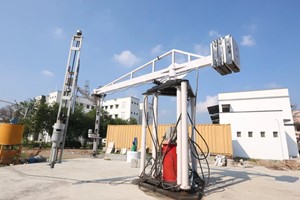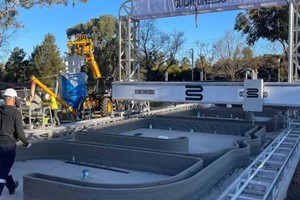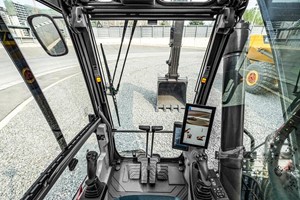Icon, a leader in large-scale 3D printing technologies, has introduced Phoenix, a robotic construction system designed to build multi-story structures, including printed foundations and roof components. The company's latest innovation marks a significant advancement in construction-scale 3D printing, offering improved speed, efficiency, and cost-effectiveness.
The first engineering prototype of Phoenix recently completed an architectural demonstration project in Austin, Texas, standing at 27 feet tall. Icon claims that the new technology will reduce 3D printing costs by half through faster printing, reduced setup time, and fewer required operators. The company is now taking orders for Phoenix projects, with pricing set at $25 per square foot for wall systems and $80 per square foot for foundations and roofs.
Advancing Home Construction with 3D Printing
Founded in 2018, Icon gained recognition by successfully 3D printing a house and unveiling it at the SXSW festival in Austin. Working alongside the nonprofit housing organization New Story, the company created the world’s first permitted 3D-printed home.
Believing that bold solutions are necessary to address the global housing crisis, the firm continues to push the boundaries of construction technology. “Construction-scale 3D printing is designed to not only deliver high-quality homes faster and more affordably, but fleets of printers can change the way entire communities are built for the better,” said Jason Ballard, CEO and co-founder of Icon.
Since its inception, Icon has built over 130 homes in the US and Mexico using its Vulcan 3D building printer. The company also has ambitious plans to develop the world’s largest 3D-printed neighborhood in Texas and has collaborated with NASA on a lunar and Martian habitat initiative called Olympus. This project includes 3D-printed landing pads, roadways, and structures for extraterrestrial environments.
Phoenix: A New Era of 3D Printing
Phoenix represents a major departure from its predecessor, the Vulcan model, introducing greater portability, efficiency, and scalability. Unlike Vulcan’s stationary structure, Phoenix features a large articulated arm mounted on a rotating base, allowing for greater mobility and flexibility across construction sites.
One of the biggest engineering challenges in developing Phoenix was maintaining construction precision while accommodating the dynamic movement of its robotic arm. Icon addressed this issue by implementing a sophisticated stabilization system, reducing deviations caused by environmental factors such as wind or inherent arm movement. This innovation enables Phoenix to construct larger, more complex structures, including multi-story buildings like the Phoenix House.
Icon’s construction systems incorporate either the Phoenix or Vulcan printer, depending on project needs. Additionally, the Magma portable mixing unit prepares CarbonX, Icon’s proprietary building material, for the printing process. The company also offers Codex, a digital catalog of over 60 ready-to-print home designs across five collections.
AI and Software Innovations
Beyond hardware advancements, Icon has introduced an AI-powered system named Vitruvius to revolutionize home design and planning. This platform utilizes human input and project specifications to generate robust architectural plans, permit-ready designs, financial models, and construction schedules.
Additionally, the firm’s advanced BuildOS software suite plays a crucial role in orchestrating the entire 3D printing process. BuildOS manages everything from optimizing architectural designs for printing to coordinating on-site robotic hardware, ensuring seamless execution of construction projects.
Scaling Up and Future Prospects
With Phoenix and its suite of advanced technologies, Icon continues to redefine the possibilities of 3D-printed construction, aiming to create cost-effective, high-quality housing on a large scale. The company envisions a future where fleets of robotic printers can rapidly construct entire neighborhoods, transforming how homes and infrastructure are built.
Looking ahead, Icon plans to expand the capabilities of its 3D printing systems to meet increasing demands for sustainable and affordable housing solutions. By integrating advanced robotics, AI-driven design, and innovative materials, the company seeks to further disrupt the traditional construction industry and provide viable solutions to the ongoing global housing crisis.
Through strategic partnerships and technological advancements, Icon is paving the way for a future where automated, high-quality, and affordable housing becomes more accessible. As the construction industry continues to evolve, the firm remains committed to pushing the boundaries of what is possible with 3D printing technology.
By Jijo Malayil













